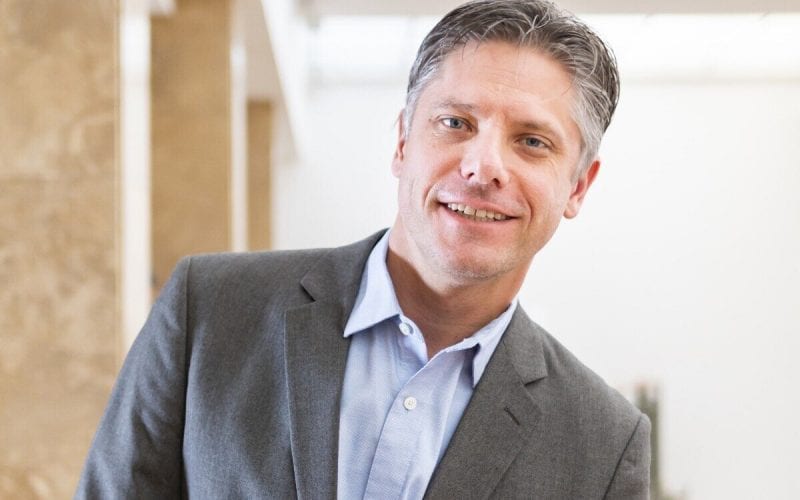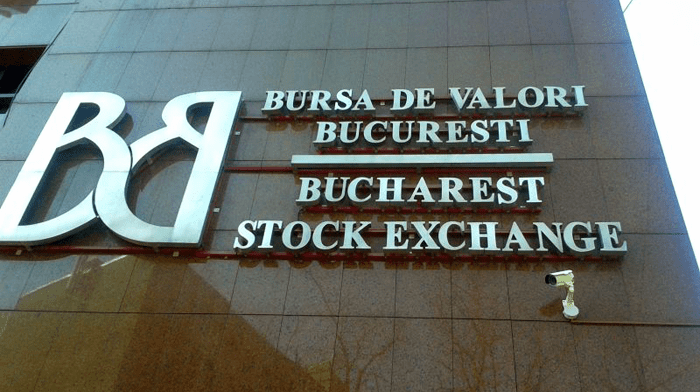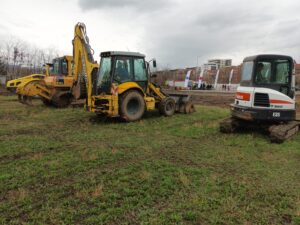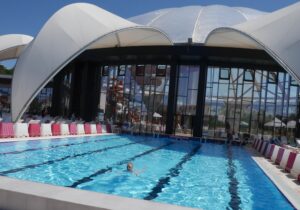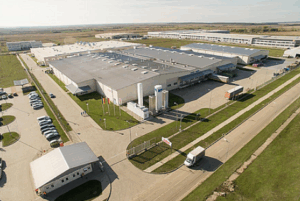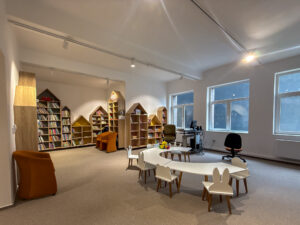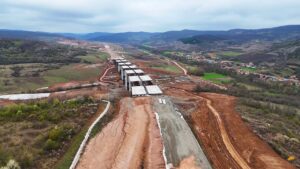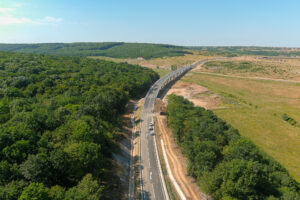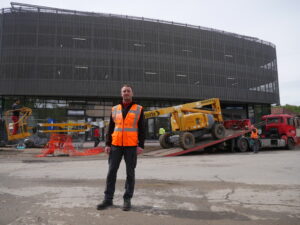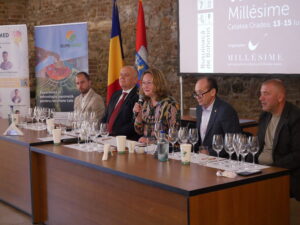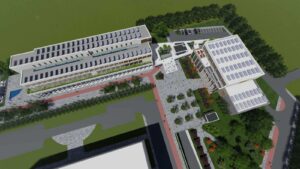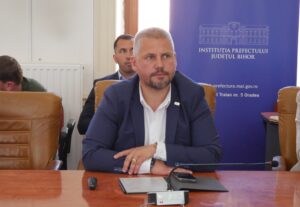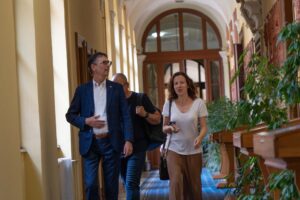Thanks to the suitably diverse airline and passenger mix, Chris Dinsdale, the new, recently appointed CEO of Budapest Airport Zrt. expects a faster traffic recovery than at other airports in the region. In the interview with airportal.hu, he stated that the construction of the new passenger hall could commence in 2025, and they would like to temporarily reopen Terminal 1 until then, with the addition of a pier. The planned multistory car park will be constructed in a slightly different location, and a complex public transport hub is planned in its place, which will be connected to the future railway station.
You have been working at Budapest Airport since 2015. How long have you been living in Hungary? Besides your career, outlined in your CV, what connects you to Budapest, aviation and specifically Ferihegy?
I moved to Hungary over 17 years ago with my Hungarian / Canadian wife Julianna, initially for only two years, but we quickly decided to stay permanently. We have three wonderful children, LÃvia, Viktória and Ãdám. To steal a saying from a friend, after these many years I have “developed†two hearts, a Canadian heart and a Hungarian heart. Budapest is a wonderful city, but only one part of the country, and I think my connection is more to Hungary, rather than just to the city. As for aviation, honestly, until six years ago I only passed through the airport when going on holiday and as a frequent flyer on business. But the funny thing about aviation and Ferihegy is that it gets under your skin and grabs hold of you. Now, after almost six years, I can say that I am firmly in the grasp of Ferihegy. I feel a deep passion for the sector and specifically for Ferihegy and its community.
As a manager coming from finance, what is it that you will do differently as CEO, compared to your predecessors, and what is it that you have to do differently in the market conditions brought about because of / in the wake of the pandemic?
The current crisis in aviation and recovery from it require a completely new approach in practically all areas of our operation. We must pay even more attention than previously to health protocols; passengers’ altered expectations and heightened caution all require us to be even more circumspect. We would like to place much greater emphasis on quality and ensure the continuous development of the airport infrastructure. For that, it is of course necessary that not only us, as airport operator, but also all of our partner companies and authorities participating in service provision should represent the same level of quality and innovation. Everyone must shoulder their own responsibilities in this regard. All this must take place in an environment that places sustainability and our respect for the local communities as a prerequisite of future growth.
Prior to taking this role, I was CFO and deputy CEO; thus, I have been deeply involved in all aspects of the airport. Consequently, I come to the job with an already deep foundation in all areas. As for finance, after much sacrifice from all our staff, the operation of Budapest Airport remained stable throughout the crisis, and as we emerge from it, the pressure on our shoulders will ease. We are a proud gateway to Hungary, would like to make Hungarian tourism a success story again and take passenger levels to new heights.
What are the biggest challenges for Budapest Airport and for you personally during the coming years and beyond, over the next 3-5 years?
We must rewrite the airport’s medium and long-term strategy, and we need to review whether our earlier objectives and visions are still correct, or need to be replaced. The crisis has overwritten everything; we must adapt our concepts, priorities, business plans and development schedule. We cannot ignore global trends either; sustainability, the user experience, digitization, changing communication platforms, to name a few, all shape our operation on a daily basis. We must continue to develop in these areas and examine them with an open mind that is accepting of change. We have always set ambitious targets which drive and shape the entire company and its ecosystem. We’ve had a very difficult two and a half years, we have drawn a lot of conclusions from these events, which has ultimately transformed our corporate culture and approach. We need to open a new page in 2021 and the team is ready for that.
In addition to the numerous challenges, did the crisis create opportunities for Budapest Airport as well,in terms of regional competition between nearby capital airports, for example? What are these and how do you plan to exploit them?
Do airlines, primarily the low-cost carriers, exploit competition between airports to further reduce their costs and to gain discounts for relaunched flights? Do you expect systemic changes in revenues because of this?
Budapest Airport is continuously competing with other airports in the region and beyond, as airlines decide on which destinations to operate based on profitability. Airlines have the ability to create demand, as they market the most profitable destinations. While other airports increased their prices in 2021, BUD kept them unchanged, and worked out a new, multi-year incentive scheme together with the airlines already in 2020 that is designed to support a quick recovery.

After the restart, when will the dynamic growth observed prior to the pandemic return?
Inoculation data give us reason to hope; but having said that, the 2019 traffic levels and network will take time to fully recover. But I do expect moderate traffic already by the summer, while a full recovery will likely take a few years.
In the short term, market recovery is not driven by demand, but it is impacted by artificial limitations, such as the travel restrictions introduced by the various countries and the need to travel in harmony with the related testing rules. The demand and the propensity to travel are there in people, so as soon as the restrictions are reduced or abolished, a significant increase in traffic can be expected. The tourism agency and all players in the industry are working hard to return to the 2016-2019 „golden age” as soon as possible.
What new challenges must airports face on account of the global pandemic and after the pandemic? Can there be winners in this crisis, how does Budapest Airport position itself to make sure that it should emerge from the crisis in the best possible shape?
It is likely that airports will have to comply with various health regulations, not only in the short term but also going forward, as part of our normal operations. This would mean, for example, that some of the measures introduced earlier may need to be maintained longer term, or that the vaccination and the COVID testing of passengers need to be checked before traveling or upon arrival.
We have been preparing for months for the expected ramp-up of traffic, while a multitude of developments have been implemented at the airport in the past two years; more than ever before. A new passenger pier, reconfigured and refurbished interior spaces, capacity expansions, along with the refurbishment and expansion of infrastructure. We are continuously discussing with our service partners “primarily the ground handlers, who perform several passenger processes, such as check-in, baggage loading / off-loading and bussing“ on how we can comply fully with the modified regulations and still keep travel enjoyable.
That is what we see at the moment, but it is also possible that the next few months will bring new measures. The conditions of reopening are still shaping up in Hungarian, foreign and airline regulations; we will have to adjust to these. So flexibility will be key in the coming period; airports that can adapt quickly to the current, very fluid environment will have a competitive advantage over others.
In the longer term, sustainability must be one of our primary focuses. Here I refer not just to carbon emissions and achieving net zero as soon as possible, but also the many other aspect of sustainability. These include our impact on water resources, waste management and, most importantly, the impact on the communities that are close to the airport. Our relationship is a symbiotic one, where we mutually rely on each other. As such, the airport must continue to make and increase its efforts to ensure that there is no undue impact on these communities. This will be a focus area, and one where both sides will need to come together to find compromises.
How do you see competition within the region and between regions over the coming years? Can Budapest Airport profit from the fact that travel needs and habits have changed? What are the segments where the recovery is likely to be faster and where could this process take longer?
Ultimately, one of the main aims of all our work is that passengers should enjoy their journey, and we must be competitive on a regional and European level. In 7 years, we won the best airport in the region award 7 times, and in cargo, the record numbers for 2020 and the first months of this year prove everything. This shows that we have done many things right in the past, but as discussed earlier, the last years have taught us valuable lessons in a dramatically changing environment.
The pandemic will clearly impact travel habits, as you say. The segment of visiting friends and relatives, mainly by those working abroad, made up a considerable 41% of the 2019 traffic at Budapest Airport; this is expected to come back fastest. City breaks will also recover moderately quickly, which is a major segment at 35% in 2019. Business travel and long haul traffic, on the other hand, will probably return slowly over the coming years, but these only made up 18% and 5% in 2019, respectively. Here I refer to 2019 traffic since this was our last „normal” year of operations.
We are lucky because we will likely recover faster than our competitors, due to the above passenger mix and always ensuring a favorable, well diversified airline mix, where we have a healthy balance between national and „low-cost” carriers, which both account for approximately 50% of our passenger mix.
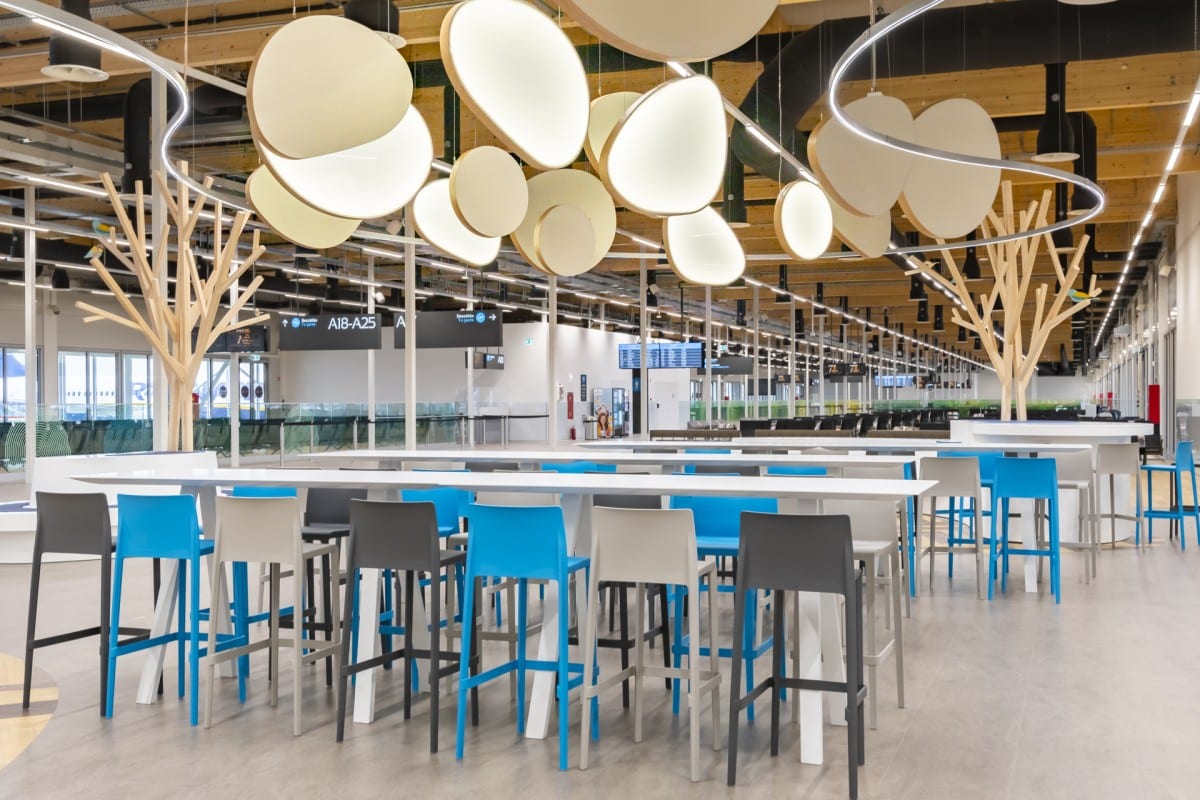
What volume of passenger traffic does Budapest Airport foresee for 2021? By when will the route network and the flight number / capacity seen before the pandemic come back?
That is a tricky question, since many unknowns exist, and in the short term, the pace and the timing of the recovery have a high degree of uncertainty. Budapest Airport is prepared to welcome any and all traffic that returns, but realistically, we don’t expect more than 70% of the 2019 capacities during July and August. An even more likely scenario is that the recovery in the late summer months is likely to be approximately 50% of the 2019 level.
As mentioned earlier, the travel restrictions pose artificial limitations. Traffic this year will primarily depend on the opening of the Hungarian borders and regulations in other countries, as well as the long-term efficiency of vaccines and the level of inoculation. It is therefore difficult to predict what the future will bring. What we do see is that traffic is likely to restart first within the EU, and then other traffic will come later, once the external borders have been opened. The North American carriers will not come back this year; we will need to wait a few years for their return, but direct traffic to Asia is likely to be restored sooner. The airport’s route development team is working hard to attract airlines back as soon as possible, while we are also actively cooperating with the authorities in our common aim. We are continuously negotiating about the frequency and the relaunch of all flights which operated previously to Budapest or have potential to be a new route.
Will there be durable changes in the proportion of inbound and outbound traffic? In which segment will the recovery come sooner?
In the short and medium term, we do not expect significant distortion in this regard compared to the previous state of affairs. Hungary and Budapest remain an attractive destination for foreigners, whilst Hungarians are still looking for opportunities to go on holiday abroad.
You completed several large investment projects last year (e.g. Pier 1, baggage sorting facility, refurbishments) in spite of the pandemic. Are you planning significant investments this year, or that will only be possible after the end of the pandemic? For example, do you plan to continue the exterior and interior reconstruction of the older terminal, 2A?
Actually, we completed 95% of our refurbishment plans earlier than originally planned. Due to the low traffic, we thought it better to bring certain development and refurbishment works forward; execution was much more efficient, faster and more convenient for passengers in a near-empty terminal. We did delay some projects, but we did not take any items off our project list because of the crisis, and completed everything that we wanted, in spite of the financial pressure. This will bring a thousand-fold return now, during the reopening, when traffic starts to increase, as the developments create larger spaces, more seamless passenger processes and a better passenger experience. As for large scale developments in the coming year, a new, large maintenance hangar is under construction, our new main gate will open soon, while various other large projects are underway, mostly involving areas used for aircraft maneuvering. It is a bit too early to announce a few other large projects that we are working on.
Up to what level of passenger traffic is the current infrastructure able to serve needs? With the current, improving passenger satisfaction, when do you have to begin significant expansion works?
The capacity of the airport is very much driven by our morning departure peak and evening arrival peak. So the capacity of the current infrastructure is a much more complex question and will depend on the structure of the recovery. We have made numerous improvements and expansions during the past few years, by installing self-service systems, extending baggage handling systems, significantly expanding our boarding areas and reorganizing passenger processes. The impact of all this needs to be judged once we see the recovery, but will surely increase both the quality level and the number of passengers that can be welcomed.
Has the pandemic changed passengers’ expectations in terms of hygiene, or only the number of people that is considered bearable in a given space? Do changes in the written and unwritten rules of social distancing need to be taken into account during the sizing and development of infrastructure? For example, will that be a factor during the design of the new terminal?
The safety of passengers and all the people who work at the airport is always the number one priority for us. I personally believe that passenger expectations have and will shift, and the airport will need to keep up with these changes. If some of the health and safety measures will remain officially in place at airports in the long term or the “unwritten rules of social distancing†become the norm, we will have to consider these during the design of any new terminal areas or related infrastructure.
Is it possible to expand check-in and security screening capacities, for example, under the current framework provided by Terminal 2, or the next step is the construction of a new terminal? How long will construction take? If you expect 2019 traffic to return by 2022-23, as can be forecast from previous statements and the estimates of international experts, when do you have to begin the project?
We expanded the security screening capacity on the Terminal 2B side last year; thus, at present, 8 screening lanes await passengers on the A side and 10 on the B side. It is possible to establish two more lanes on the A side, with significant reconstruction. With regard to the check-in hall, we are striving to operate new technologies which replace the check-in counters. That is why we installed self-service baggage drop-off systems. Passengers can tag their own bags and dispatch them to the baggage sorting facility by placing them on the belt, thus speeding up the check-in process and easing their journey. The benefit of these units is that you can also later place them in areas outside the terminal or even at remote locations, for example downtown. The passenger journey will continue to evolve, and we must be a front runner in these changes.
From the commencement of construction until the completion of the new Terminal 3, we are calculating with a period of approximately 3 years, which is dependent on the extent to which construction can be phased, and seamless operation. According to the current forecasts, the construction of the main new terminal area could begin in 2025, but this timeline will be driven by the pace and the structure of the recovery and is hence likely to change.
Having said that, until the completion of the new terminal building, we do have the intention to temporarily reopen Terminal 1, with the addition of a pier to increase capacity and improve the passenger experience. We originally planned to reopen T1 this year, but this too has been delayed because of the pandemic, just like the construction of the new terminal and the related infrastructure but we hope to get the needed permit soon.
According to your current plans, what will the design of the new terminal be like? Will it harmonize with the existing ones, or will it have a different facade? Will its positioning conform to the triangular arrangement of 2A and B, or, in line with the sketches published earlier, it would be a long building in parallel with runway II, towards the Cargo City?
The design of the new terminal building will be decided in an architectural design tender, to which we would like to invite both Hungarian and international architecture firms. The aim is to have the new terminal area merge into the existing terminal, so that we have one terminal and not a visible mix. The SkyCourt is a landmark building that we are proud of and which represents the quality that we wish to strive towards. As you mentioned, the new terminal building will be located in parallel with runway II, towards the Cargo City.
Will the new building be a dedicated low-cost terminal, or you do not plan to have such separation? Will these be multifunctional, like at Pier 2B?
Our aim is to provide the best quality, the best service and the latest technology for all types of passengers, regardless of the airline. I personally do not relate to the “low-cost†title; we see and we will continue to see airlines blurring the lines between the traditional low-cost and national carriers. As such, we do not plan a low-cost terminal, but a consistent quality, regardless of airline or destination. Of course, some airlines require boarding bridges, while others prefer walk-on walk-off procedures, so we will need to provide different service offerings, but we will not differentiate by low-cost versus national carriers. The concept foresees a brand new terminal check-in building, security area, baggage handling system, with the flexible utilization of gates for Schengen and non-Schengen traffic, contact stands and walk-on walk-off piers (like Pier B or Pier 1). Indeed, we will make areas multifunctional where possible, in order to be able to offer as broad a service offering as possible.
When will there be progress concerning the large car park in front of the terminal? The demolition / construction site has been fenced off since the fall of 2018, and it does not exactly further the image of the airport or of the country. When do you expect progress regarding the transportation hub in front of the terminal, the railway development and the multistory car park?
The construction of the multistory car park is part of the long-term airport development plan that we worked on together with the government. However, the plan not only contains the construction of a multistory car park in a slightly new location, but at the former MSCP site, we will place a multifunctional transportation hub, which would transform access to the airport and traffic here. Those arriving by bus, minibus and taxi will be able to approach the airport easily, while the train station would be constructed besides this planned hub. I personally very much like this concept, since it gives equal access to the terminal for all passengers.
We fully support the railway connection to the airport and hope that it will progress quickly; not only in the interest of passenger convenience, but also as an environmentally friendly and sustainable transportation link. It could offer another possibility for passengers to access the city center quickly, give access to the airport for those living elsewhere in Hungary and would also make a significant contribution to reducing traffic on the airport express road.
As a result of and after the pandemic, do you expect air cargo volumes to decrease, due to the slump in the world economy? If this disappears with the end of the pandemic, do you expect a decline? What will the performance of the cargo business look like this year and over the coming years, and also the infrastructural expansion planned in parallel?
The global changes experienced in supply chains and the problems which manifested themselves in other modes of transport in 2020 undoubtedly created opportunities for air cargo, which could essentially be exploited best by cargo-friendly airports. In spite of the generally decreasing cargo traffic data which characterized the industry last year, cargo volumes at BUD were stable (134 500 tons, -0.8%) compared to a year ago, while all competitor airports decreased significantly; Vienna achieved about -23%, Warsaw approximately -20%, Prague about -36%, and Munich -56%. The healthy cargo growth at BUD continued and even strengthened in 2021; the 56 220 tons of cargo handled from January to April was a 30% increase compared to the same period in the previous year. This period brought the strongest cargo traffic in the history of the airport; the 16 691 tons handled in April 2021 was a record high, with growth of 51.3% compared to April 2019, before the COVID-19 pandemic.
I can say that opportunities for air cargo in Budapest were not created by the crisis, but by many years of focused and hard work by the Budapest Airport, the cargo community and the authorities. The BUD Cargo City, handed over at the beginning of last year, is a great example of this cooperation, but we could also add the continuous development of our cargo route network, or the persistent development work that market players carry out together to make the BUD Cargo environment as attractive as possible for companies dealing with air cargo in the region.
We do not expect a decline in cargo. On the contrary, we have begun reviewing the potential further expansion of the Cargo City, as we believe that cargo volume could reach 150 000 tons already this year. The aerial Silk Road between China and Hungary, announced a few days ago, will also strengthen this trend; our task is to provide an appropriate „home” for air cargo arriving in and departing from Hungary, while also serving as a regional cargo hub. Budapest Airport will continue to pursue all new opportunities to expand our participation in the cargo and integrator sectors, to the benefit of Budapest Airport, the local economy as well as the Hungarian economy as a whole.




